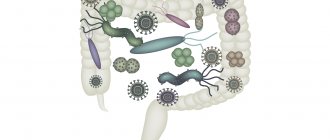Published: 05/18/2018 Updated: 03/09/2021
Anemia is a dangerous condition. In children, it provokes a slowdown in mental and physical development, and speech impairment. In pregnant women, it can cause fetal pathologies and complications for the mother. Vegetarians and those who constantly adhere to low-protein diets are at risk of decreased performance, cognitive function, headaches and dizziness. If you feel that you are sorely lacking in energy and strength, get tested. More than half of all anemias remain undiagnosed. And without laboratory tests it is impossible to detect anemia.
What is anemia?
Anemia is a condition associated with a decrease in hemoglobin levels in the blood (below 110 g/l). Often accompanied by a decrease in the number of red blood cells - red blood cells or their total volume.
The main function of red blood cells is to transport oxygen from the lungs to various organs and tissues and remove carbon dioxide. The transport function is carried out thanks to hemoglobin, the main component of red blood cells. Hemoglobin consists of the protein (globin) iheme, which in turn consists of ferrous iron and protoporphyrin IX. 70% of the iron in the body is found in red blood cells.
At the doctor's appointment
Our women suffer from iron deficiency
In 2021, the World Health Organization adopted new recommendations for the prevention of anemia, replacing the recommendations of five years ago. According to WHO estimates, about 40% of women worldwide today suffer from anemia - and in at least half of cases this is caused by a lack of iron in the body. , a physician at the OKDC, tells us what this entails and how to make up for this deficiency.
Hidden risks
— Anemia caused by a lack of iron negatively affects the well-being of any person, but it is especially dangerous during pregnancy, as it can lead to impaired development of the placenta, prematurity, and fetal growth retardation. Even replenishing iron in late pregnancy or after childbirth will not bring noticeable results, since the child initially experienced oxygen starvation due to anemia. Therefore, anemia must be treated at the stage of preparation for pregnancy.
The human body has a relatively small supply of iron, so this supply must be replenished in a timely manner. Lack of dietary intake, impaired absorption, as well as hidden and obvious blood loss reduce the amount of ferritin, the iron depot in the body. However, for some time the level of serum iron and hemoglobin remains normal, so the problem is often not detected in time.
As a result, under such a hidden deficiency, iron reserves in tissues and organs are depleted, and this occurs with normal levels of iron and hemoglobin, which are given by a blood test. Therefore, the main criterion for assessing the level of deposited mineral is the ferritin level. This indicator should always be included in the examination of persons at high risk of anemia, which primarily includes patients with hypothyroidism (overt and subclinical) and autoimmune thyroiditis.
Alarming numbers
To date, it is estimated that hidden iron deficiency is detected in 20-30% of people, and the percentage of women at risk of developing anemia ranges from 50 to 86%. These are very alarming numbers.
With the development of anemia, tissue hypoxia and trophic changes in them may occur, since the main function of iron is the transport of oxygen as part of the heme of erythrocytes. With hidden deficiency, there are also hypoxic phenomena and tissue trophic disorders.
Oddly enough, hair, nails and teeth begin to suffer first. Now do you understand why some women with hypothyroidism experience hair loss and damaged nails even with normalized hormones? These processes are largely associated with iron deficiency. Often in such cases, a decrease in iron reserves is not diagnosed and its deficiency is not replenished in a timely manner.
What should alarm us?
- Early graying or severe hair loss, brittle nails, transverse striation of nails, flattening or curvature of the nail plate, itching of the skin, cracks on the fingers and in the corners of the mouth, atrophy of the oral mucosa, atrophic gastritis, difficulty swallowing. But the main “constellation of common symptoms” is:
- weakness
- fast fatiguability
- headache
- dizziness
- chronic fatigue
- muscle weakness and low exercise tolerance
- decreased overall performance
- pallor of the skin and mucous membranes
- chilliness of hands and feet, possible slight increase in temperature
- daytime sleepiness
- decreased immunity and susceptibility to infectious diseases
- craving for sweets, chocolate
- urinary incontinence or false urge to urinate
- unstable chair
What happens if iron deficiency is not treated?
What will happen to those who remain iron deficient but do not develop into anemia? Foreign scientists say that nothing good. This is especially true for children. A study conducted in the UK found that girls with a mineral deficiency had lower IQ levels than their peers without the deficiency.
Children with iron deficiency are more irritable and restless due to increased synthesis of adrenaline and norepinephrine by the adrenal glands. Decreased immunity jeopardizes the health of not only children, but also adults with iron deficiency, not to mention problems with the thyroid gland. How to identify hidden anemia?
To identify hidden iron deficiency, it is necessary to determine the iron content in the blood serum, the so-called TIBC - the total iron-binding capacity of the serum. Only after this can the percentage of transferrin saturation with iron be determined using a special formula. However, even this widely used technique may not be entirely accurate and may produce errors. The level of ferritin in the blood allows you to judge your iron supply with greater accuracy. However, it is worth considering that ferritin levels can increase in inflammatory diseases; in such cases, determining the soluble transferrin receptor will help diagnose iron deficiency. This study is being successfully carried out in the OKDC laboratory. This indicator does not increase during inflammatory processes and is an important parameter for determining the supply of iron in the human body. Therefore, each patient and each case must be approached strictly individually, taking into account all the details in order to quickly establish the correct diagnosis and promptly carry out effective treatment.
share information
0
Social buttons for Joomla
Causes of anemia
There are quite a few factors that provoke anemia. Anemia can occur due to:
- unbalanced diet (iron deficiency, deficiency or excess of vitamin B12, vegetarianism);
- disorders of folic acid metabolism;
- increased need of the body for nutrients (growth period - adolescence, pregnancy);
- frequent infectious diseases (cytomegalovirus, herpes virus, hepatitis);
- heavy metal poisoning.
In addition, anemia often accompanies diseases of the gastrointestinal tract (chronic gastritis), develops against the background of helminthic infestations, especially often in children (parasites attach to the intestinal wall and can cause bleeding), uterine bleeding (heavy menstruation, endometriosis).
First harbingers
Lack of iron in the body can lead to various diseases. It is a mistake to believe that a low level of iron in the blood is already anemia. The first signs of element deficiency appear long before anemia occurs. Among them:
- Dyspnea.
- Fast fatiguability.
- Chronic fatigue.
- Weakness.
- Dizziness.
- Noise in ears.
- Floaters before the eyes.
- Clear signs.
If you do not attach importance to these symptoms, then in the future, with insufficient iron intake in the body, serious consequences will develop.
- Iron-deficiency anemia. This disease can occur in different ways. The mild form is treated by adjusting the diet. For moderate anemia, you need to take special medications under the supervision of a doctor and constantly monitor your blood tests. For very low hemoglobin, hospital treatment is indicated.
- Decrease in the body's defenses. The immune system guards the entire body. Failure in its operation leads not only to frequent colds, but also to allergic reactions and inflammatory processes.
- Malfunctions of the cardiovascular system. The consequence of severe iron deficiency with concomitant anemia may be the development of heart failure. If there were heart problems (for example, hypertension) before the development of anemia, the risk of developing heart failure increases, as well as the development of other pathologies (heart attack, stroke).
- Chronic headaches. This is not just a symptom, a malfunction of the vascular system, it is a serious problem that affects the quality of life. Headaches can often be accompanied by pressure surges and the development of neurological symptoms.
- Depression. The functioning of brain neurotransmitters is impaired due to iron deficiency. The balance of amino acids, adrenaline, dopamine, serotonin and other mediators responsible for important functions changes. The consequence is the gradual development of depression. This is not just a bad mood in rainy weather, it is a clinically confirmed diagnosis with characteristic symptoms.
- Developmental defects in a child. They occur when iron levels are very low in children. During intrauterine development, the child receives iron from the mother. If the baby was born on time, then the supply of the element should be normal. If the birth is premature, there may be problems, since the fetus receives a considerable amount of iron in the last week before birth. If the mother has an iron deficiency during pregnancy, the child will not receive enough iron, and autism and mental retardation may develop.
According to the above, it can be argued that the lack of iron is due to the fault of the person himself. Therefore it is important:
- Eat a balanced diet.
- When playing sports, you need to understand the importance of nutrition for the body to fully recover after exercise.
- During pregnancy, you need to pay special attention to your health, regularly get tested and visit a doctor to prevent all sorts of risks for mother and child.
- Caring for children includes providing them with nutritious, healthy food, especially during critical age periods; all this is in the hands of parents, their responsibility.
- A timely medical examination will allow you to identify many diseases in the early stages.
It all comes down to one thing - vigilance in relation to health. It is better to prevent a problem than to eliminate its serious consequences.
How to recognize anemia?
Typical symptoms of anemia caused by hypoxia of organs and tissues are dizziness, fatigue, weakness, tinnitus, shortness of breath when climbing stairs, decreased performance. There is also a decrease in appetite, pale skin (in some cases yellowing), and “stubs” in the corners of the mouth. Hair may begin to fall out and the condition of nails may deteriorate. In addition, the mood changes and apathy and irritability appear, even if everything is fine.
If you notice such changes, do not rush to take iron or vitamin supplements or take B12 injections. The doctor gives a conclusion about anemia based on laboratory parameters. And taking medications on your own can be unsafe.
Manifestations of the disease
Signs of iron deficiency in the body are:
- pallor of the skin and mucous membranes;
- the appearance of shortness of breath;
- high pulse;
- dizziness;
- tinnitus, pain in the temples;
- squeezing or burning in the heart area;
- sudden onset of weakness;
- fast fatiguability;
- hot temper;
- instability of the emotional background.
A symptom of iron deficiency is also a constant desire to eat something inedible, such as a piece of paper, chalk or ice. Some patients experience mental deterioration and even hallucinations.
External manifestations of anemia
- dull, brittle, split ends hair;
- hair loss;
- thin nails, the appearance of a spoon-shaped concavity;
- dry skin prone to flaking.
Signs of iron deficiency in women
Lack of iron causes, first of all, a deterioration in general health. Women diagnosed with anemia report symptoms such as:
- decreased tone;
- presyncope and fainting;
- frequent dizziness;
- the appearance of “floaters” in the eyes;
- daytime sleepiness;
- problems falling asleep;
- increased nervousness;
- weakening of memory;
- increased sensitivity to cold;
- frequent colds;
- the appearance of acute infections in the gastrointestinal tract.
In addition, among representatives of the fair sex, physical activity and the speed of thought processes decrease, muscles become sluggish and weak. Sometimes there is an attraction to unusual smells, for example, there is a desire to smell gasoline, rubber, acetone. Iron deficiency in pregnant women is fraught with complications.
Diagnosis of anemia
To diagnose anemia at CITILAB you can undergo the following tests:
- 11-10-001 – General blood test
- 95-13-211 – Vitamin B12
- 33-20-038 – Folic acid (folates)
- 26-20-100 – Serum iron
You can also run profile 99-00-026 - “Chronic Anemia”, which includes additional parameters for diagnosing and determining the type of anemia. For example, ferritin, which reflects how much ferric ions are deposited; total serum binding capacity, haptoglobin, transferritin and other important indicators.
Replenish iron deficiency
To prevent iron deficiency anemia, in addition to the iron or vitamin supplements prescribed by your doctor, it is recommended to change your diet after receiving test results. It must contain foods rich in iron and microelements (copper, cobalt, manganese, nickel, vitamin C), which help the absorption of this vital essential metal.
| Foods high in Fe (>5 mg/100 g product) | Foods with moderate Fe content (1-5 mg/per 100 g of product) | Foods rich in copper, nickel, cobalt, manganese, vitamin C |
|
|
|
Interesting fact. Iron is best absorbed from meat products.
Physiological norms of iron and vitamin B12 and folic acid
In different countries, the average iron intake varies from 10 to 22 mg/day. According to the standards recommended in Russia, for men this level is 8-10 mg/day, for women it is 1.5 times more - 15-20 mg/day. For children - 4-18 mg/day. A sufficient level of folic acid for adults is 400 mcg/day, for children - from 50 mcg every day. Men and women should get at least 3 mcg/day of vitamin B12.
Be healthy!
Author:
Baktyshev Alexey Ilyich, General Practitioner (family doctor), Ultrasound Doctor, Chief Physician
Required standards
The content of the article
During monthly menstruation and during pregnancy, the female body loses iron, which means it is necessary to restore its normal level.
The required amount of iron per day is approximately 18 mg. However, in fact, only 10% of the required amount comes with regular nutrition. This is due to the fact that some products are not a source of the element, and some products completely block the absorption of iron.
The group of blockers includes:
- dairy products;
- Tea coffee;
- soybeans, corn, eggs.











